Phu Quoc Prison is a renowned historical site and a popular destination for visitors to Phu Quoc Island. Here, you’ll witness over 40 recreated torture methods, offering a glimpse into the brutal reality faced by prisoners of war. You’ll also gain a profound admiration for the resilience and unwavering spirit of the Vietnamese people in the face of colonial atrocities.
About Phu Quoc Prison
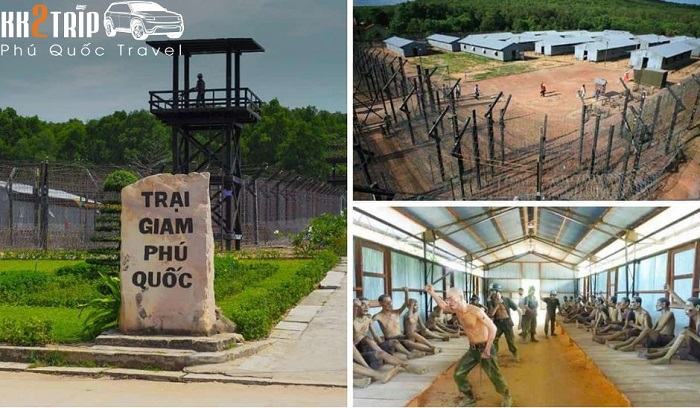
Alongside the Con Dao Prison and Hoa Lo Prison, Phu Quoc Prison stands as one of Vietnam’s three most significant historical landmarks. These sites bear witness to the nation’s indomitable spirit and resistance against oppression. Though the war has ended, the horrors of Phu Quoc Prison continue to resonate. If you’re travelling to Phu Quoc, a visit to this poignant site is essential. Located at 350 Nguyen Van Cu Street, An Thoi Commune, approximately 28km from Duong Dong town centre, Phu Quoc Prison was known as Coconut Tree Prison during the Indochina War. It served as the central prisoner of war camp for the Republic of Vietnam, holding over 32,000 prisoners. In 1995, the Ministry of Culture and Information recognised it as a National Historical Site, opening its doors to the public. Visitors are often drawn to the wartime stories and brutal acts committed during the French and American-Vietnamese War. The vividly recounted tales offer a stark reminder of the war’s cruelty and lasting impact. > See more: Phu Quoc Pearls – Review of 3 Famous Pearl Farms
Phu Quoc Prison History – A Hell on Earth
The French Colonial Period
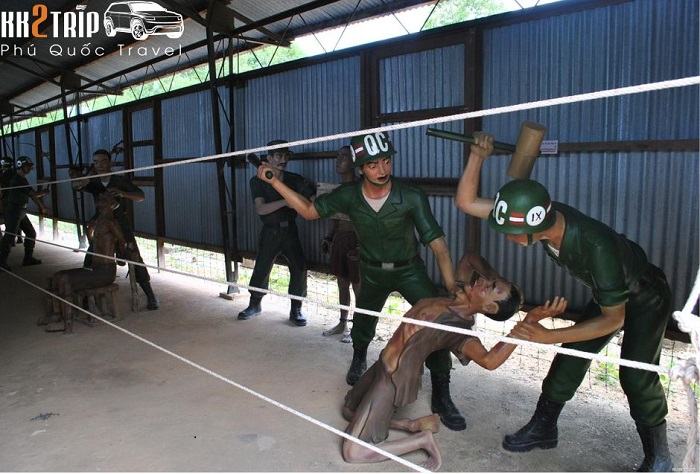
After occupying Phu Quoc Island in 1946, the French constructed Southeast Asia’s largest prison to incarcerate revolutionary fighters. In 1949, following a defeat by Chinese liberation forces, 30,000 Nationalist Chinese troops retreated to the southern part of Phu Quoc. The French repurposed their barracks, imprisoning over 14,000 soldiers and giving rise to the name “Coconut Tree Prison”. The prison was fortified with electrified barbed wire fences, and heavily armed guards patrolled constantly, ready to suppress any escape attempts. Following the Geneva Accords, most prisoners were repatriated to North Vietnam.
The American War

In 1955, the old prison was demolished and rebuilt on the same foundation, spanning over 4 hectares and retaining the name Coconut Tree Prison. It was divided into separate sections for women, the elderly, and men. In 1956, numerous prisoners, including political prisoners, were transferred there. Due to frequent escapes, political prisoners were subsequently moved to the mainland or Con Dao Prison. The Americans later built another large prison adjacent to Coconut Tree Prison, forming the Phu Quoc Prisoner of War Camp. This complex became infamous for its barbaric torture methods, instilling fear in all who were imprisoned there.
The Historical Significance of Phu Quoc Prison

While Phu Quoc’s beaches and attractions showcase the island’s beauty, the prison offers a sobering reflection on its past. It serves as a stark reminder of the atrocities committed by French colonialists and American forces. They employed brutal methods to break the spirit of Vietnamese fighters. Every corner of the prison and every story shared echoes the resilience, courage, and unwavering spirit of the Vietnamese people. A visit to Phu Quoc Prison provides a profound understanding of the war’s brutality and the nation’s history. > Related: Rach Gia Port – Detailed Information About Ferry Routes and Ticket Prices
What to See at Phu Quoc Prison
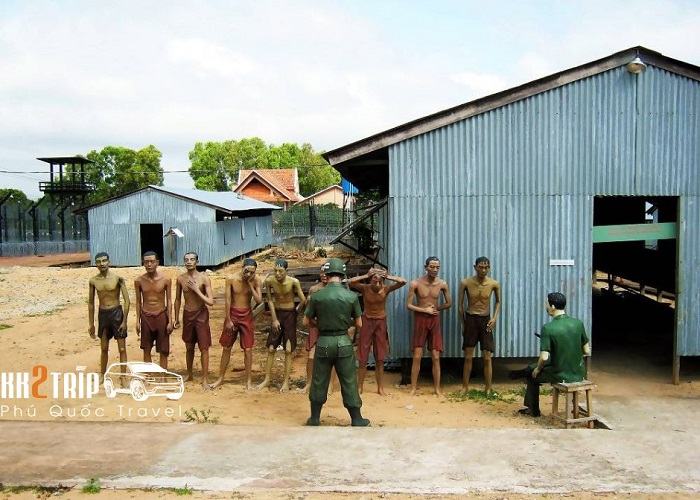
Tour guides recount the struggle for independence, the sacrifices made, and the unwavering spirit of the war heroes. Despite significant destruction, the reconstructed exhibits offer a poignant glimpse into the past. The prison is divided into 10 wards, labelled A through D. Ward B2 vividly depicts the brutal torture methods employed by the French and American forces: “tiger cages” with razor-sharp barbed wire, burning sand, tooth extraction with hammers, hot oil baths, and countless other forms of torment. The surrounding areas have been restored and preserved, offering visitors an authentic experience. A prisoner cemetery and memorials honour the fallen heroes. This site is not just a tourist attraction but a place for veterans to pay homage to their fallen comrades.
Unmissable Experiences at Phu Quoc Prison
Witness Reenactments of Torture in Ward B2
This area provides a realistic depiction of the prison’s barbaric torture methods. Stories are brought to life through mannequins representing prisoners and soldiers, offering a visceral understanding of the brutal reality faced during the fight for independence.
Explore the Solitary Confinement and Torture Chambers
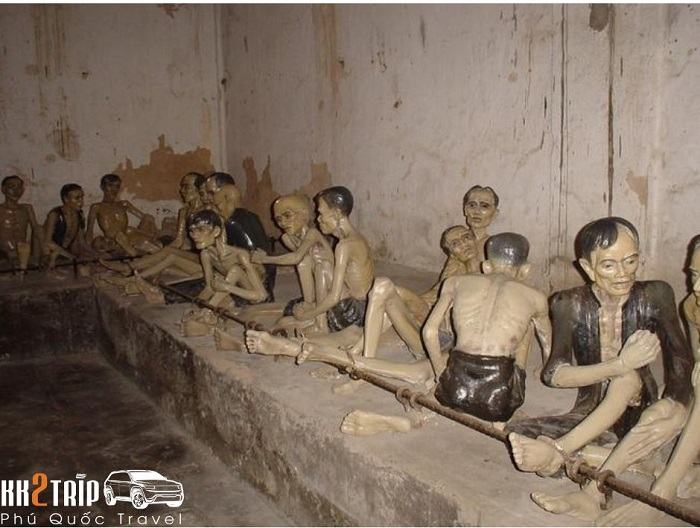
The solitary confinement cells are among the most haunting areas of the prison. Here, countless individuals endured horrific torture at the hands of the colonial regime. Learn About the Torture Methods Used by American Forces
Former prisoners recount chilling tales of various torture methods:
- Barbed Wire Tiger Cages: Cages of varying sizes, some forcing prisoners to lie on the ground, others suspended above barbed wire, and some allowing only a crouched position. Prisoners were stripped naked and exposed to the elements for days.
- Crucifixion: Nails were driven into prisoners’ bodies – necks, hands, knees – in an attempt to break their will.
- Tooth Extraction: Teeth were brutally extracted or broken using hammers.
- Hot Oil Baths: Prisoners were placed in sacks and immersed in boiling oil.
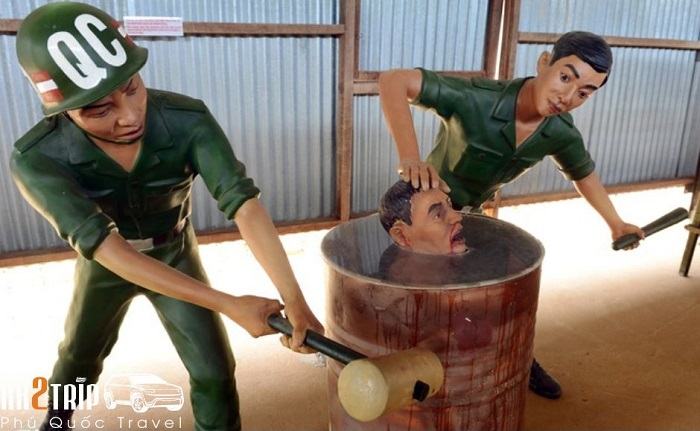
Coconut Tree Prison offers a stark and realistic portrayal of these and many other brutal torture methods.
Important Reminders When Visiting Phu Quoc Prison
Phu Quoc Prison is a place of solemn remembrance. Visitors should observe the following guidelines:
- Dress respectfully, avoiding revealing or inappropriate attire.
- Refrain from touching or disturbing any exhibits or artefacts.
- Dispose of rubbish properly in designated bins.
- A gift shop and snack bar are available on site.
- Allow 1-2 hours to fully explore the prison.

Beyond the prison, explore nearby attractions like An Thoi Port, fish sauce factories, Sao Beach, Vinpearl Safari Phu Quoc, and VinWonders Phu Quoc. These destinations offer relaxation and entertainment, complementing the historical experience. While Phu Quoc boasts stunning beaches and attractions, a visit to the prison provides crucial insight into Vietnam’s history and the spirit of its people. Phu Quoc Prison stands as a powerful testament to the nation’s past and a tribute to its heroes. This concludes KK2TRIP’s detailed review of Phu Quoc Prison. We hope this information helps you plan a meaningful visit to the prison and explore the island. To enhance your Phu Quoc experience, choose convenient transportation. KK2TRIP is a leading provider of tourist car rentals and airport transfers in Phu Quoc. With years of experience and a reputation for excellent service, KK2TRIP ensures a comfortable and enjoyable journey. Contact us for detailed Phu Quoc itinerary planning. KK2TRIP CO., LTD– Address: 118 Tran Hung Dao Street, Phu Quoc
- Hotline: 0816 667 118
- Email: nguyennam1994pq@gmail.com
- Website: kk2trip.com


 Tiếng Việt
Tiếng Việt